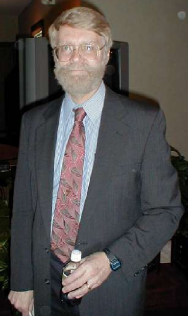Radiocarbon Dating of Dinosaur Fossils
Dinosaurs supposedly died out 65 million years ago.
What if they didn’t?

Dinosaurs supposedly died out 65 million years ago.
What if they didn’t?

In 1 Corinthians 13 the Bible says, “For we know in part, and we prophesy in part.” Our knowledge is imperfect in this life, and we are continually learning more. This is also true in the scientific realm, and theories that were once held often have to be given up. We may see scientific theories change again very soon due to new discoveries concerning rates of radioactive decay, the speed of light, and the degree of ape-human similarity. All of these areas are significant for theories of the origin of life on earth, so it is helpful to examine them in more detail. Here there is only space to examine the first of these areas, namely, the rate of radioactive decay.
Scientists Travel U.S. Highway 441 Between Cherokee, NC and Gatlinburg,
TN to Test Hydrothermal Fluid Transport Model
for Polonium Radiohalo Formation

Good scientific theories are able to explain data and make testable predictions. For the Christian, a third element is required, that the theory be in harmony with the clear teachings of scripture. Some creation scientists even begin with scripture to formulate theories and hypotheses. In this essay, we will look at three predictions ultimately based on scripture, made by physicist Russell Humphreys of the Institute for Creation Research. The predictions deal with (1) the magnitude and dynamics of planetary magnetic fields, (2) the existence of a cosmic rotation axis, and (3) diffusion of helium through zircons. All of these predictions are in accord with a young earth interpretation of Genesis 1. As we will see, the data fit the predictions well.

D. Russell Humphreys, Ph.D.
Young earth creation scientists who agree on what the bible teaches about creation may still disagree on the interpretation of natural phenomena. Such is the case with creation scientists Robert Gentry 1
Parts I and II mentioned young carbon 14 dates as evidence that very old isotopic dates correspond to true ages in the thousands of years. Also, helium retention in zircons and the pattern of discordances in isotopic dates suggest an increase of decay rates in the past. There is also evidence that human mutation rates were faster in the past, which is consistent with a higher level of radiation. Furthermore, the genetic diversity of humans and other organisms suggests an origin a few thousand years ago. Several references by Anderson and Spangler suggest that decay rates can vary.
One of the major challenges confronting the young earth view has been the supposed ages of millions of years for the earth and dinosaurs—even billions for the age of the earth. One proposal that has been made by creation scientists to account for this seeming discrepancy between secular science view and the creationist view is accelerated nuclear decay (abbreviated herein as ACCND).